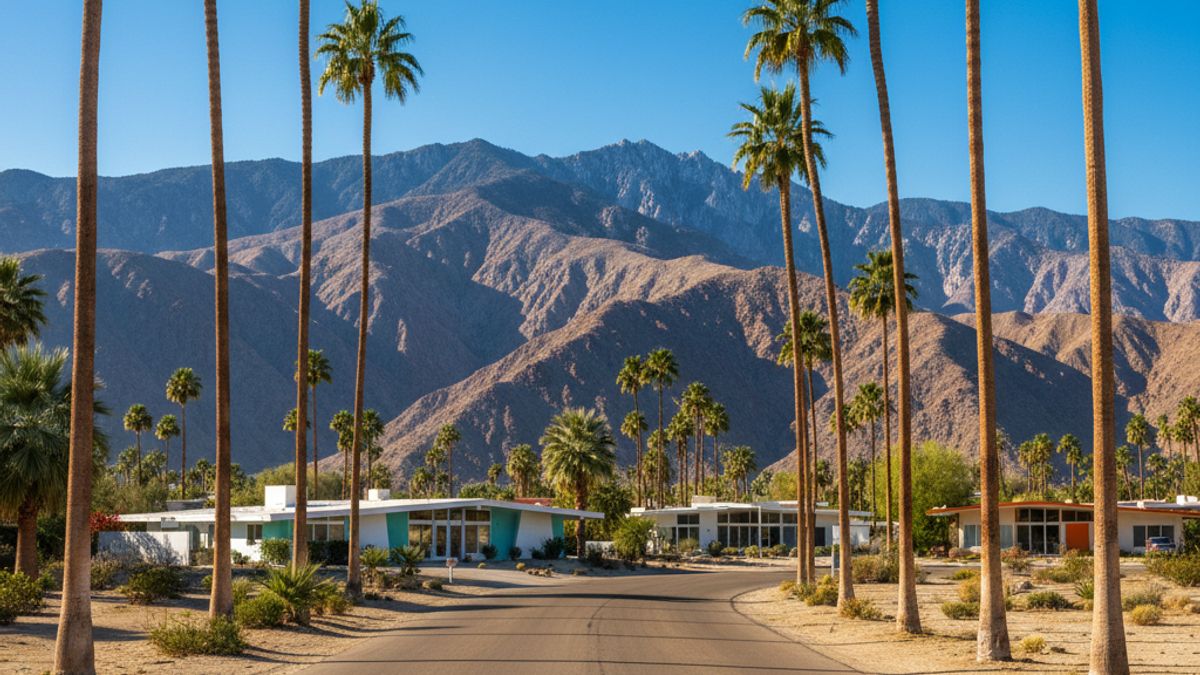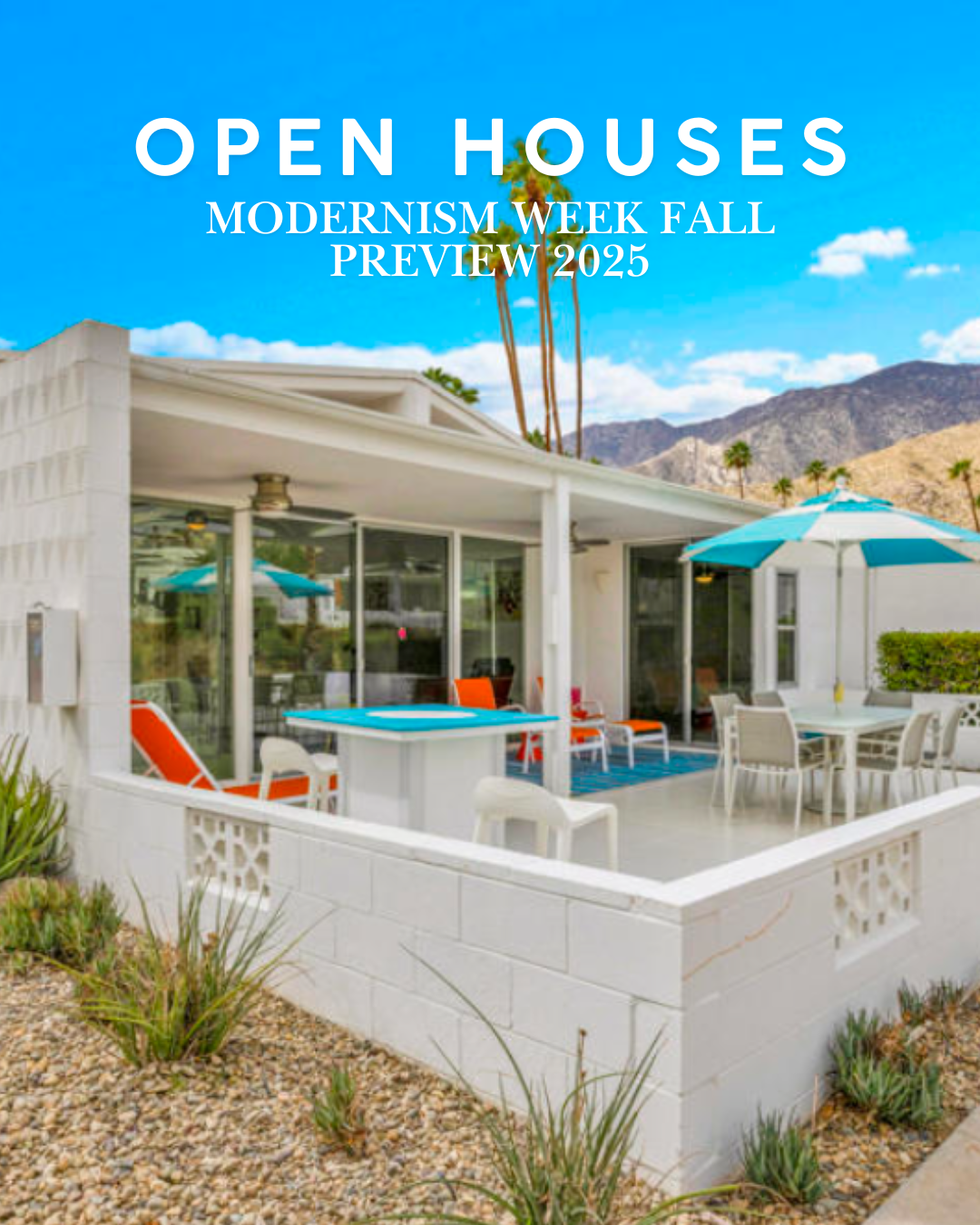Palm Springs is the kind of place people picture when they imagine desert living with style. Think broad mountain views, mid-century modern architecture, palm-lined streets, and a calendar that fills fast with festivals, art shows, and golf tournaments.
Whether you are looking at homes for sale in Palm Springs or just curious about what life there provides, this guide lays out the pros and cons of living in Palm Springs in a straightforward, neighborhood-savvy way.
What are the Pros of Living in Palm Springs?
Palm Springs offers a lot of advantages to people who want year-round warm weather, a strong cultural scene, and proximity to outdoor recreation. If you like long stretches of sunshine and an easygoing pace of life, Palm Springs delivers in ways most coastal cities do not.
The sections below break those positives into the parts most people actually care about: weather, scenery, culture, amenities, retirement living, and travel access.
Year-Round Sunshine
Palm Springs is known for clear skies and abundant sun. The Palm Springs International Airport climate station and regional climate summaries show long stretches of sunny days and high percentages of possible sunshine, which is why many residents describe the city as a year-round outdoor spot. That heavy sunlight is a major draw for people escaping colder climates.
Stunning Scenery and Outdoor Recreation
You get a dramatic contrast here. The San Jacinto Mountains rise right off the valley floor, and they frame the city with picture-perfect ridgelines.
Trails, rock formations, and nearby ridge routes give hikers and trail runners plenty of options, while desert roads and bike routes appeal to cyclists who enjoy big views with little traffic at dawn. Joshua Tree National Park is a doable weekend trip for anyone who wants boulder-strewn landscapes and stargazing.
Vibrant Arts and Culture Scene
Palm Springs boasts an active arts and culture scene that punches above its size. The Palm Springs International Film Festival is an annual draw for filmmakers and cinephiles, and the city hosts galleries, music series, and rotating public art projects throughout the year.
The creative calendar fuels local restaurants, hotels, and a steady schedule of events that keep downtown Palm Springs lively beyond the tourist seasons.
Resort-Style Living and Amenities
From spas to pool-centered communities and private golf course neighborhoods, Palm Springs offers resort-like amenities that many residents enjoy daily.
If a community amenity list matters to you, Palm Springs developments frequently advertise pools, clubhouses, golf course access, and fitness offerings as part of the neighborhood package. That resort-style lifestyle is a big part of why people move to Palm Springs.
Retirement-Friendly Community
Many retirees migrate to Palm Springs for the weather, health services, and recreational options. The area supports active adult communities, healthcare providers, and organizations focused on aging well.
For people looking to downsize into a maintenance-light lifestyle with social programming and easy access to medical care, Palm Springs is often on the shortlist.
Proximity to Major Cities and Getaways
Palm Springs makes it easy to escape for a longer trip or host visitors who fly in. Los Angeles and San Diego are reasonable drives for weekend trips, and desert destinations like Joshua Tree or the Coachella Valley festival sites are nearby.
The city’s central location in the Coachella Valley helps when you want to mix desert calm with occasional big-city access.
What are the Cons of Living in Palm Springs?
No place is perfect, and Palm Springs has trade-offs you should weigh. These include intense summer heat, a tourism-driven economy that causes seasonal swings, limits in the local job market for some industries, and costs that can be higher than newcomers expect.
Read these with an eye on the practical steps you would take if you decide to move.
Extreme Summer Heat
Summers in Palm Springs are hot in the way desert summers are: brutally hot at times. Average high temperatures in the height of summer commonly climb into the triple digits and can reach or exceed 110 degrees in prolonged heat waves.
That intense heat limits outdoor activities in the middle of the day and often requires serious attention to cooling systems, home insulation, and pool equipment for year-round comfort.
Seasonal Economy and Tourism Crowds
Tourism sets the tempo in Palm Springs. When Modernism Week, music festivals, or a big convention rolls into town, restaurants book up, hotel rates jump, and traffic on Palm Canyon Drive crawls. Locals learn to plan errands around those waves because the hustle fades once the events pack up.
That surge of visitors fills cash registers during peak weeks, but once the crowds leave, sidewalks quiet down and many shops cut back their hours until the next wave arrives.
Limited Job Market Outside of Hospitality
Career choices narrow once you look beyond hospitality, healthcare, construction, and the arts. A handful of tech startups and light-manufacturing shops operate here, but they do not match the scale or variety found in larger cities.
Many residents patch together remote work, freelance contracts, or a commute toward the Inland Empire or Los Angeles to fill the gap. It works for people who prize the desert lifestyle more than a dense job market, but it can feel limiting if you need a broad range of local openings.
Higher Cost of Living Than Expected
The cost of living in the Palm Springs area is higher than the national average in several categories, and local real estate prices have been buoyed by demand for both primary homes and second homes.
Depending on timing, neighborhood, and property condition, housing costs can surprise newcomers who expect desert towns to be uniformly affordable. Recent housing market snapshots show a median sale price that reflects ongoing demand for Palm Springs homes.
Is Palm Springs Right for You?
Picture a winter morning where you sip coffee on the patio in short sleeves, then head out for a quick hike before lunch. If that sounds like your kind of rhythm, Palm Springs can feel like a dream. The city serves up steady sunshine, pool-ready afternoons, and a steady stream of art fairs, film screenings, and live-music nights that keep the social calendar lively long after peak tourist season ends.
Still, life here has quirks. Summer heat can turn midday errands into a sprint from one air-conditioned spot to the next, and most neighborhoods lean on cars rather than buses or trains. Tech offices and Fortune 500 campuses are scarce, so remote work or commuting might be part of the deal.
If you’re good with those trade-offs and drawn to desert light and laid-back days, Palm Springs can feel less like a vacation backdrop and more like home.
FAQs About the Pros and Cons of Living in Palm Springs
What is the median sale price for homes in Palm Springs right now?
Recent market reports for August 2025 peg the median sale price at about $630,000. Prices swing higher in spots like Old Las Palmas and dip in more modest neighborhoods on the city’s edges, so the number is best viewed as an average starting point rather than a guarantee.
How many days of sunshine does Palm Springs get each year?
Palm Springs commonly advertises roughly 300 to 350 days of sunshine per year, which is one of the main attractions for people moving from cooler or cloudier climates. That long stretch of sun supports outdoor pools, biking, and golf for much of the calendar. Climate summaries from local stations and regional climate tools confirm the high percentage of possible sunshine.
Are there good outdoor activities and golf courses nearby?
Yes. Palm Springs boasts numerous golf courses, hiking opportunities in the San Jacinto Mountains, biking routes, and easy access to desert day trips like Joshua Tree National Park. If outdoor activities and regular rounds of golf matter, Palm Springs is hard to beat for variety and year-round access outside the hottest midday hours in summer.
How is public transportation and walkability in Palm Springs?
SunLine buses cover Palm Springs and the rest of the Coachella Valley, but they run less frequently than big-city systems, so most locals keep a car for everyday errands and weekend getaways. Downtown is another story. Sidewalks are wide, crosswalks are frequent, and cafés, galleries, and VillageFest stalls sit within an easy stroll of one another.
Outside the core, blocks stretch longer, summer heat ramps up, and shaded paths thin out, making walking or biking feel more like recreation than routine. If you hope to live with fewer car trips, map out bus stops, bike routes, and morning shade on the exact street you’re eyeing before you commit.
Will Tourism Change Your Day-to-Day?
Big events such as Modernism Week, music festivals, or a major golf tourney can turn Palm Springs into a lively hive of visitors. Streets near downtown slow down, dinner reservations fill fast, and shops extend hours. Many locals lean into the buzz, planning nights out when the energy is high, then savor the calmer pace once crowds thin.
Where you live matters, too: a condo off Palm Canyon Drive feels the surge more than a neighborhood tucked farther from resort corridors. Decide whether you enjoy that ebb and flow or prefer a spot that stays quiet even when the city is packed.





.png)
